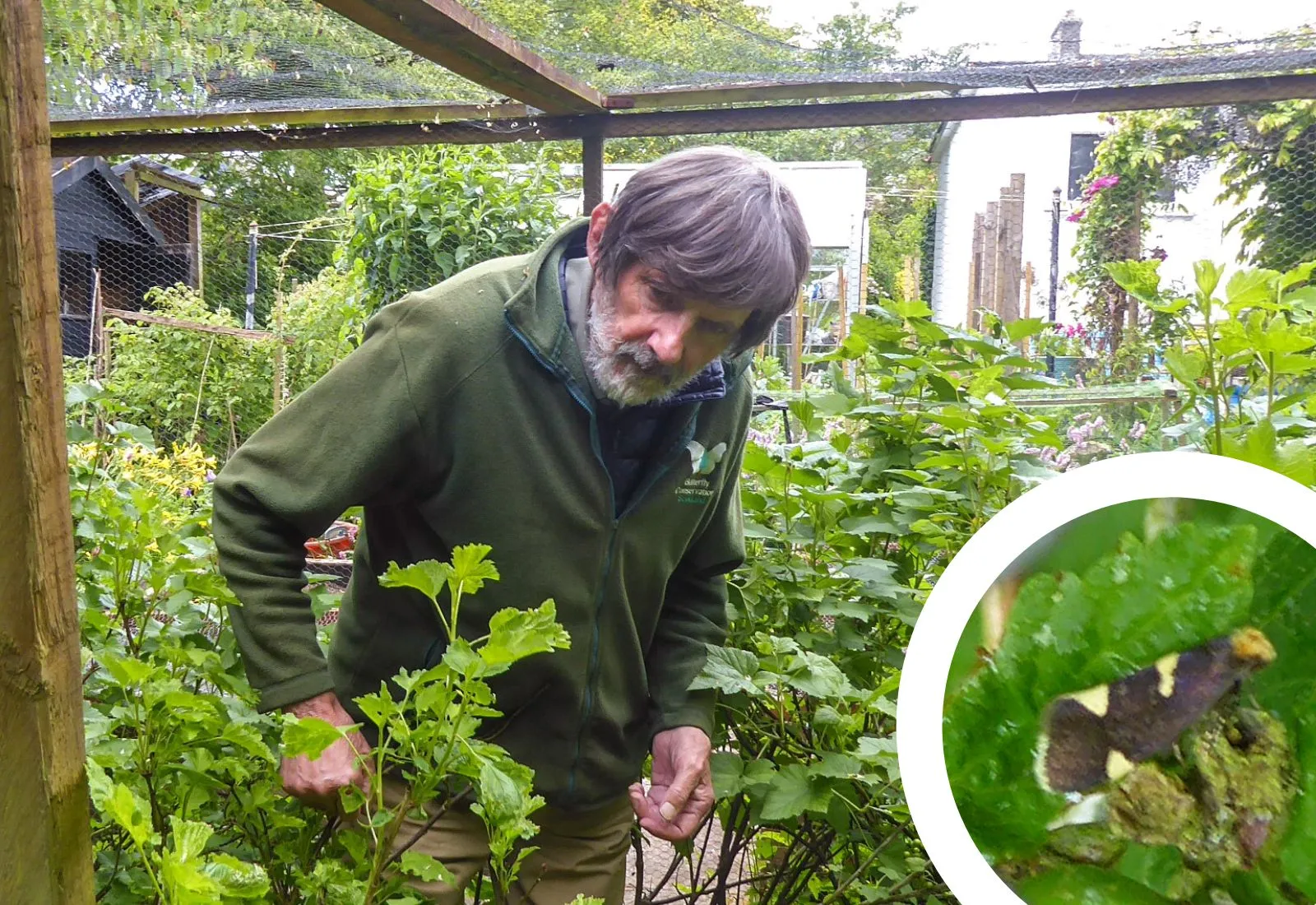A SEPTUAGENARIAN sleuth hunting for one of Britain's rarest moths was stunned to find it living in his own garden. Retired doctor Jo Davis, 78, from Lanarkshire, walked for miles along the banks of the Clyde over the past year looking for the Currant Shoot Borer moth and the Red Currant bushes it feeds on. He was astonished to realise the treasure he sought was under his nose the whole time when he spotted one of the tiny black-and-yellow insects on his own Red Currant bush. He said: "I'd sort of given up looking for it, then I couldn't believe it - I was just walking past my fruit cages and this pretty little black and yellow moth appeared. I rapidly took a picture, looked it up and wow! Yes it is! How absurd not to be able to find it all that time and then find it right under my nose. I was very pleased." Jo had a lifelong love of butterflies and moths and became a volunteer with national wildlife charity Butterfly Conservation in 2006 shortly before he retired. In April 2023 he joined a trip with other Butterfly Conservation members to see the last known colony of Currant Shoot Borer moths in Scotland - a scattering of wild Red Currant bushes in a community-owned woodland on the banks of the River Tweed. The tiny moth is very scarce in Britain with fewer than 10 known colonies. The caterpillars burrow into the shoots of Red Currant, Black Currant and Wild Gooseberry plants, especially beside rivers under a woodland canopy. Inspired by the event, Jo made repeatedly searched for Red Currant bushes with signs of the moth's presence along the banks of the River Clyde near his home, but found nothing. It was only after giving up the search that he happened to spot the very moth he had been searching for in his garden in May. Having snapped a photo and confirmed the identity, Jo started looking in earnest and spotted several more of the tiny insects flitting around. Jo and others at Butterfly Conservation are convinced that there must be more populations of Currant Shoot Borer in Scotland, particularly as Lanarkshire used to be a famous fruit-growing region and there may be pockets of Red Currant plants from that time where the minute moth is still living. Butterfly Conservation’s Head of Conservation for Scotland Dr Tom Prescott said: "Jo's fantastic discovery shows the real value of our wonderful volunteers, going out and searching for some of these rare species that can be right on your doorstep or in your garden. We need more people like Jo!" The charity is now calling on people to join the search for the Currant Fruit Borer in Scotland. The adult moths can be seen flying in May and June so there is still time this year to find a new unrecorded colony. Jo, who is a member of Butterfly Conservation's Glasgow and South West Scotland Branch, said: "I think my story shows what can be hiding right beneath our noses and how important species can be unrecognised until we look for them. If we make these discoveries they can really change our understanding of ecology and the effects of climate change - it's a bit of scientific information that's been missing." He added: "It's also a lovely past-time as one gets older - you can set a moth trap in the evening then go out in the morning and find all these fantastic different species, and contributing that data to Butterfly Conservation can make a real different to how we target our conservation work to help butterflies, moths and many more precious species." Find out more about the Currant Shoot Borer, where to look for it in Scotland and how to submit sightings, go to butterfly-conservation.org/in-your-area/scottish-office/priority-species-updates/lampronia%20capitella


